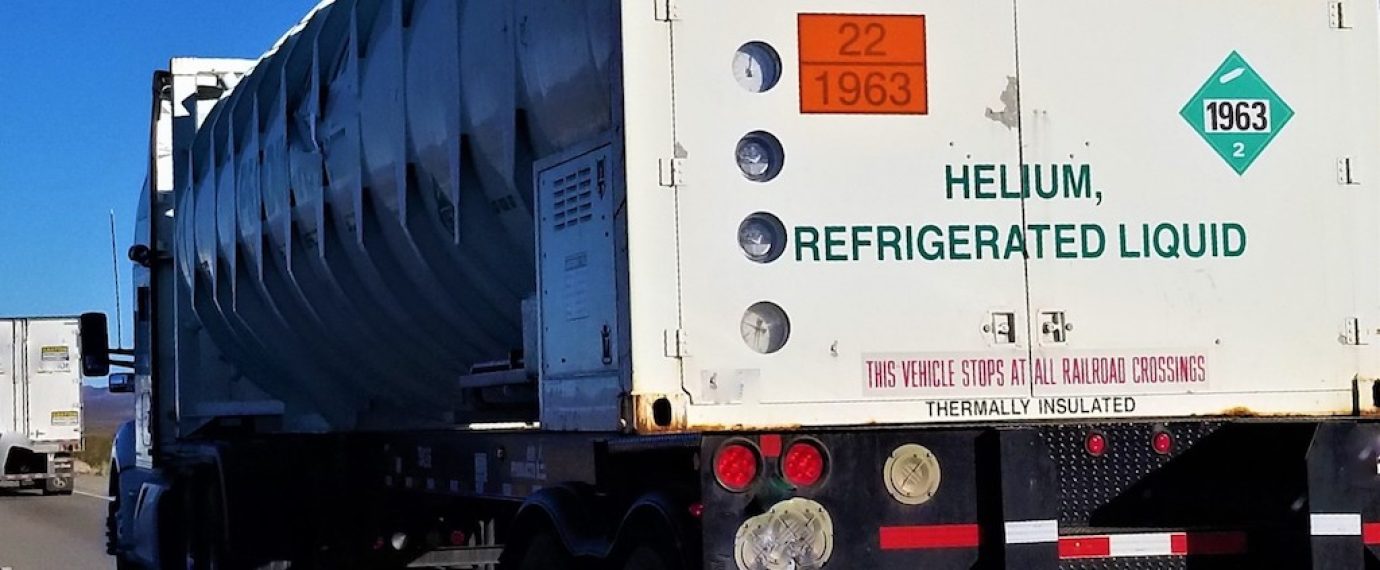By Marc Squires, CSP, Sr. Manager – Health & Safety, Regulatory Product Manager – DOT HazMat, U.S. Compliance
The transportation of hazardous materials (HazMat) within the United States is governed by the Hazardous Materials Transportation Act. These regulations are designed to “protect against the risks to life, property, and the environment that are inherent in the transportation of hazardous materials.” These regulations, found in Title 49 of the U.S. Code of Federal Regulations (CFR), establish the classification, labeling, packaging, and transport of hazardous materials as mandated by the Department of Transportation (DOT).
What is a DOT Hazardous Material?
The Department of Transportation (DOT) defines a hazardous material as “a substance or material that the Secretary of Transportation has determined is capable of posing an unreasonable risk to health, safety, and property when transported in commerce.” This designation includes hazardous substances, hazardous wastes, marine pollutants, and elevated temperature materials.
DOT HazMat Classification and Proper Shipping Name
To ensure compliance with DOT HazMat requirements, hazardous materials must first be accurately identified and described using a Proper Shipping Name, as listed in the Hazardous Materials Table (49 CFR 172.101). Proper Shipping Names are determined based on the material’s properties, physical state, and intended use. These may include:
- Chemical names (e.g., Xylene)
- Specific-use names (e.g., Copper-based pesticide, liquid, toxic)
- General hazard class descriptions (e.g., Corrosive liquid, acidic, organic, n.o.s.)
The DOT classifies hazardous materials into nine classes, including explosives, gases, flammable liquids, flammable solids, oxidizers, poisons, radioactive materials, corrosives, and miscellaneous dangerous goods.
The HazMat Table provides detailed guidance on hazard classification, HazMat identification numbers, packing groups, label codes, special provisions, and packaging requirements.
DOT HazMat Packaging Requirements
Selecting the correct packaging is essential for the safe transportation of hazardous materials. DOT HazMat regulations require that packaging be both compatible with the material and authorized for use. Most shipments require United Nations (UN) Performance Oriented Packaging (POP), indicated by specific markings on the exterior of the package by the package manufacturer.
Categories of DOT HazMat Packaging
Hazardous materials packaging is divided into three categories:
- Bulk Packaging: Containers larger than 119 gallons
- Non-Bulk Packaging: Containers smaller than 119 gallons
- Exception Packaging: Limited quantity shipments that meet specific criteria
Depending on the hazardous material, packaging may include drums, pails, jerricans, boxes, bags, composite packaging, or pressure receptacles.
Marking and Labeling of DOT Hazardous Materials
Once appropriate packaging is selected, required markings and labels must be applied to ensure proper identification and handling:
- Markings: Include the UN identification number, Proper Shipping Name, and responsible party details. Additional markings may be required for marine pollutants, inhalation hazards, or overpacks.
- Labels: Square-on-point hazard labels indicate the primary and subsidiary hazards of the material. These labels must be color-coded, include hazard symbols, and display the numeric hazard class.
DOT HazMat Shipping Paper Requirements
A shipping paper, such as a bill of lading or hazardous waste manifest, must accompany all hazardous materials shipments. These documents must include:
- Basic description (ID#, Proper Shipping Name, Hazard Class, Packing Group)
- Emergency response information
- Signed shipper certification
- Total quantity, packaging type, and number of packages
DOT HazMat Loading and Transportation Considerations
When loading hazardous materials for transportation, compatibility with other materials must be evaluated. The Load Segregation Table outlines how different hazardous materials must be stored, loaded, and transported to prevent dangerous interactions. Additionally, when required, appropriate placards must be applied to the transport vehicle to clearly indicate the type of hazard being carried.
Security Plan Requirements for Hazardous Materials Transportation
If transporting certain hazardous materials in large quantities, businesses must develop and implement a security plan that includes risk assessments, security training, and protective measures to prevent unauthorized access.
DOT HazMat Training and Certification Requirements
Any employee performing tasks related to hazardous materials transportation is classified as a DOT HazMat employee and must complete DOT HazMat training every three years. This training is essential to ensure regulatory compliance and promote safe handling and transportation practices.
DOT HazMat training is critical in ensuring employees understand and comply with hazardous materials transportation regulations. This training includes four key components:
- General Awareness: Provides a broad understanding of DOT HazMat regulations and the overall transportation process.
- Function-Specific Training: Focuses on the specific duties and responsibilities unique to an employee’s role.
- Safety Training: Covers hazard recognition, prevention strategies, and emergency response procedures to protect personnel and the environment.
- Security Awareness: Educates employees on how to identify and mitigate security threats, including the prevention of unauthorized access to hazardous materials.
Training must be completed within 90 days of an employee being assigned to hazardous materials-related duties, and recurrent training is required every three years to maintain compliance. Failure to complete proper training can lead to regulatory violations, increased safety risks, and significant fines or penalties for both the employee and the employer. Staying up to date on DOT HazMat training helps organizations reduce liability, improve workplace safety, and ensure compliance with federal regulations.
Further, employers are responsible for maintaining records of employee training, including course content, instructor qualifications, and training dates. These records must be kept for at least three years and be readily available for inspection by DOT authorities. Partnering with a professional compliance training provider, such as U.S. Compliance, ensures that employees receive up-to-date, high-quality training that meets DOT HazMat certification requirements.
Who Needs DOT HazMat Training?
DOT HazMat training is required for employees who perform any of the following functions related to hazardous materials:
- Load, unload, or handle hazardous materials
- Design, manufacture, or inspect HazMat packaging
- Prepare hazardous materials for transportation
- Are responsible for HazMat transport safety
- Operate vehicles transporting hazardous materials
Stay Compliant with DOT HazMat Training from U.S. Compliance
Meeting DOT HazMat training and certification requirements is crucial to ensure compliance and avoid penalties. U.S. Compliance offers comprehensive solutions, including onsite and webinar-based DOT HazMat training. Our programs help businesses stay up to date with DOT hazardous materials regulations and maintain compliance.
Contact U.S. Compliance today to learn more about our DOT training options and how we can help you meet your DOT HazMat certification requirements!
Editors Note: This post was originally published in October 2020 and has been updated to reflect the most current information and best practices.



